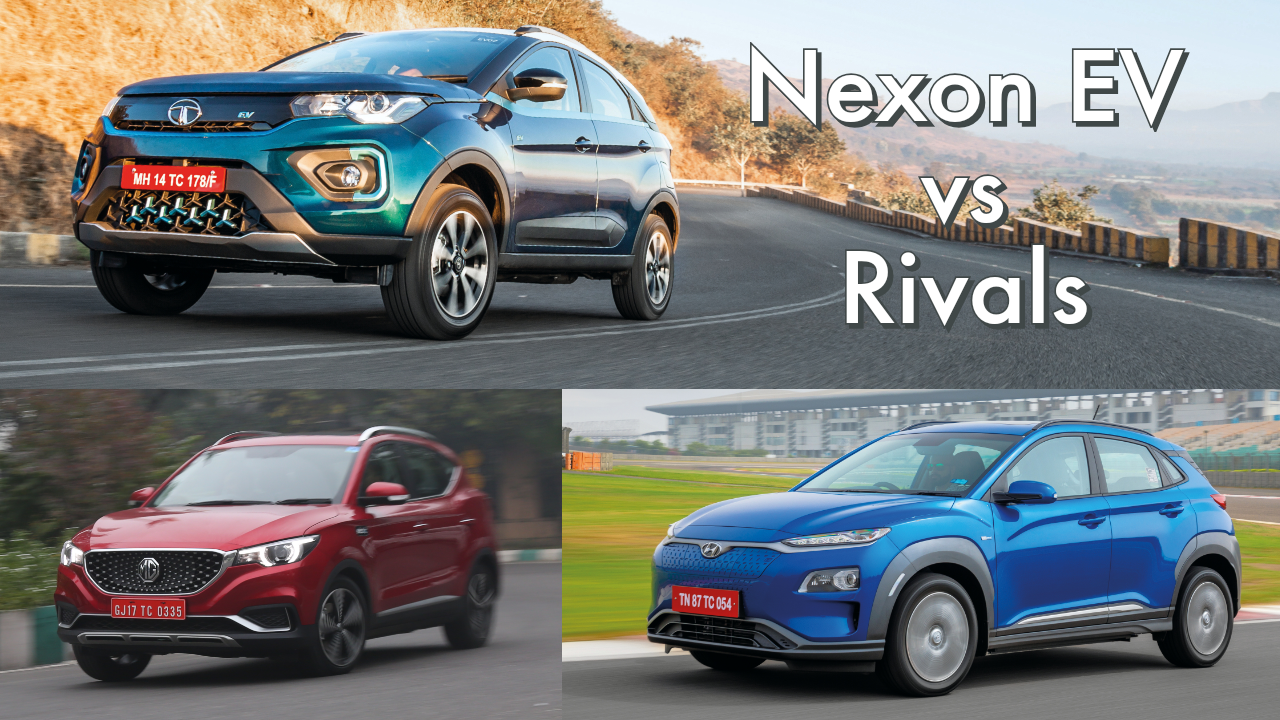Tata Nexon EV vs Hyundai Kona Electric vs MG ZS EV: Electric SUV comparo
Pitting the three long-range electric SUVs you can buy in India, the Tata Nexon EV, Hyundai Kona Electric and the MG ZS EV against each other to see which one is better on paper

We’ve entered an era where comparisons are not only drawn between ICE cars, but also pure electrics. e-SUV buyers now have three well-equipped options to choose from - Hyundai Kona Electric, MG ZS EV and now the Tata Nexon EV. How do they fare against each other, atleast on paper?
Powertrain
The main talking point about these cars is of course their electric drivetrains. The ZS EV gets a 44.5kWh battery while the Kona gets a marginally smaller 39.2kWh battery. At 30.2kWh, the Nexon EV gets the smallest battery of the lot. Despite having a larger capacity battery the ZS EV gets an ARAI certified range of 340km while the Kona’s claimed range of 452km is over 100km more than that over the ZS EV. Here too the Nexon sits on the bottom end of the lot, with a claimed range of 312km on a single charge.
Real world range
However, ARAI tests cars in the most economical mode and doesn’t exceed 50kmph during the tests. A more realistic range for the ZS EV would be around 250km while the time we have spent with the Kona shows that it can do 300km on a full charge if driven sensibly. We're yet to spend enough time with the Nexon EV, but we suspect it will be good for around 200km to 250km range in real world conditions.
Performance
In terms of performance, all three e-SUVs are brisk. The Kona and the Nexon EV sprint to a 100kmph in 9.7 and 9.9 seconds, respectively. The ZS EV is more sprightly, achieving that figure in just 8.5 seconds. They’re closely matched on power and torque as well, with the ZS EV’s electric motor pumping out 141bhp and 353Nm while the Kona’s motor churns 134bhp and 395Nm. The Nexon EV's motor on the other hand pumps 127bhp and 245Nm of torque.
Charging time
Charging time for all three e-SUVs is almost the same. With a DC fast charger, all three gain about 80 per cent range in under one hour while an AC fast charger takes six to eight hours. All three brands are installing AC fast chargers at owners’ homes or offices depending on preference at no additional cost. Moreover Tata has promised to install 300 DC fast chargers by March 2020 in the country, and 650 by March 2021. They will be initially available in Pune, Bangalore, Mumbai, Delhi and Hyderabad.

Features:
Both the Kona and the ZS EV are priced north of Rs 20 lakh and you expect them to well equipped. Neither disappoint on that front. Both get adjustable brake energy regeneration – three levels for the ZS EV and four for Kona. In the ZS EV, it’s controlled via a KERS switch in the centre console while in the Kona you can use paddles to do the same. Currently, you cannot customise the regen settings on the Nexon EV, but Tata will be updating the system in the near future to bring in the option.
There are drive modes too with the Nexon EV getting Drive and Sport while the ZS EV gets Sport, Normal and Eco. Their Korean rival meanwhile gets Sport, Comfort, Eco and Eco+. Features like leather seats, climate control, sun roof, and Android Auto and Apple CarPlay among others, are available in all three EVs. The ZS EV and the Nexon EV both get connected car tech that lets you remotely check the battery status, range, and also lets you control a host of functions like climate control, engine start/stop and door lock/unlock via a smart phone application. The Kona misses out on these connected car features, despite other, more affordable cars in the Hyundai line-up getting it.
Pricing
Tata Motors has clearly hit the sweet spot with the Nexon EV's pricing. The base XM variant costs close to Rs 7 lakh less than the base variant of the ZS EV and almost Rs 10 lakh less than the base Kona Electric. However, the ZS EV and the Kona Electric have larger batteries and a longer range too. They're also better equipped and sport better quality interiors, but even after considering all essential parameters, the massive price difference will definitely lure a lot of buyers. However, these are the introductory prices for the Nexon EV and we might see a price hike soon.



